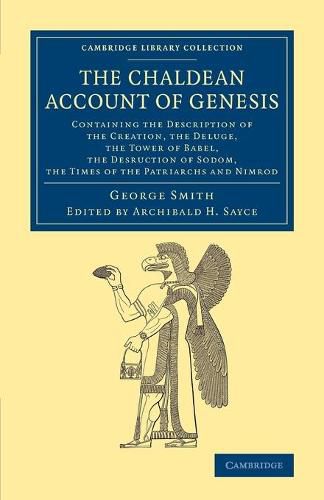Readings Newsletter
Become a Readings Member to make your shopping experience even easier.
Sign in or sign up for free!
You’re not far away from qualifying for FREE standard shipping within Australia
You’ve qualified for FREE standard shipping within Australia
The cart is loading…






The Assyriologist George Smith (1840-76) was trained originally as an engraver, but was enthralled by the discoveries of Layard and Rawlinson. He taught himself cuneiform script, and joined the British Museum as a ‘repairer’ or matcher of broken cuneiform tablets. Promotion followed, and after one of Smith’s most significant discoveries among the material sent to the Museum - a Babylonian story of a great flood - he was sent to the Middle East, where he found more inscriptions which contained other parts of the epic tale of Gilgamesh. In 1876, shortly before his early death, Smith published this work, which drew extraordinary parallels between much earlier cuneiform documents and the biblical book of Genesis. The book was both controversial and very successful. The second edition, reissued here, was published in 1880, with corrections and additional material provided by Archibald Sayce (1846-1933), which reflected recent advances in Middle Eastern studies.
$9.00 standard shipping within Australia
FREE standard shipping within Australia for orders over $100.00
Express & International shipping calculated at checkout
The Assyriologist George Smith (1840-76) was trained originally as an engraver, but was enthralled by the discoveries of Layard and Rawlinson. He taught himself cuneiform script, and joined the British Museum as a ‘repairer’ or matcher of broken cuneiform tablets. Promotion followed, and after one of Smith’s most significant discoveries among the material sent to the Museum - a Babylonian story of a great flood - he was sent to the Middle East, where he found more inscriptions which contained other parts of the epic tale of Gilgamesh. In 1876, shortly before his early death, Smith published this work, which drew extraordinary parallels between much earlier cuneiform documents and the biblical book of Genesis. The book was both controversial and very successful. The second edition, reissued here, was published in 1880, with corrections and additional material provided by Archibald Sayce (1846-1933), which reflected recent advances in Middle Eastern studies.